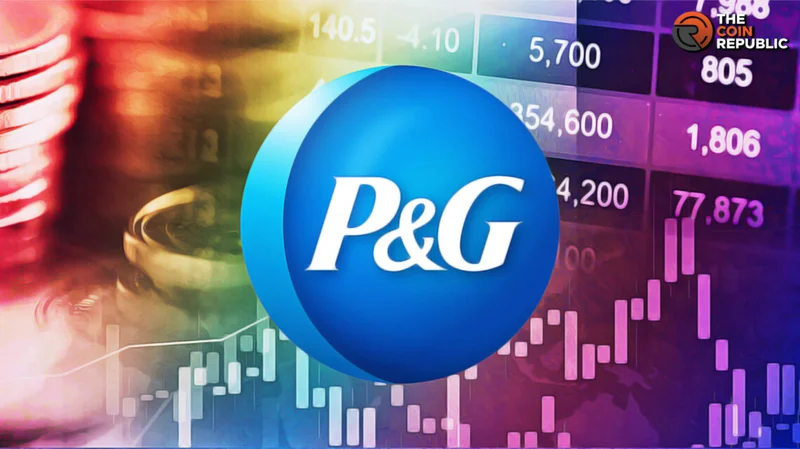Article Directory
# P&G’s 0.8% Pop: Why Is the Options Market Acting Like It Hit the Jackpot?
On October 24th, Procter & Gamble reported its fiscal first-quarter numbers. The results were solid. Better-than-expected earnings and revenue, driven by resilient demand in its beauty segment even as prices climbed. The stock (NYSE:PG) responded appropriately, ticking up a respectable 0.8% to close at $152.39. It was a logical, measured reaction to a positive, but not revolutionary, corporate filing.
On the surface, this is the kind of boring, predictable price action you’d expect from a blue-chip consumer staples giant. P&G isn’t a high-flying tech startup; it’s a battleship. It turns slowly, deliberately. An earnings beat should cause a ripple, not a tidal wave.
But if you looked just one layer deeper, into the derivatives market, the scene was anything but calm. The battleship’s modest course correction was being treated like a rocket launch. The volume of options contracts traded that day was five times the daily average. That’s not a ripple; that’s a frenzy. And it begs an immediate, critical question: Why was the options market screaming with excitement while the stock market was merely nodding in approval?
The Anatomy of a Disproportionate Bet
Let's dissect the numbers, because that’s where the real story is. On a normal day, the trading of P&G options is a relatively quiet affair. On October 24th, it was a casino. We saw 22,000 call options and 11,000 put options change hands. For the uninitiated, that’s a two-to-one bet that the stock is headed higher, and fast.
This kind of ratio isn’t unheard of, but it’s the nature of the bets that I find genuinely telling. The single most popular contract was the weekly 10/24 160-strike call. This is a crucial detail. These contracts were expiring that same day, and they were "out-of-the-money." This means traders were essentially buying last-minute lottery tickets, betting that P&G’s stock would surge more than 5% from its opening price in just a few hours. It was a Hail Mary pass based on a three-yard gain. The stock, of course, never came close.
This speculative fever isn’t just an anecdotal observation; it’s quantifiable. The 50-day call/put volume ratio across the major exchanges clocked in at 2.49. This figure sits in the 74th percentile of its annual range, confirming a statistically significant lean towards bullish sentiment. But the more granular data point is even more extreme. As detailed by Bulls Flock to Procter & Gamble Stock After Upbeat Results - Schaeffer's Investment Research, the stock's Schaeffer's put/call open interest ratio (SOIR), which measures short-term sentiment, was 0.40. That value is in the 2nd percentile of its one-year range. To put that in plain English, you’d only find fewer bearish bets stacked against P&G on roughly two out of every 100 trading days.

The options market, in this context, is like a poker player who, after being dealt a solid but not spectacular hand, decides to shove all their chips into the middle of the table. The move is loud, aggressive, and designed to signal overwhelming confidence. But is that confidence justified by the cards on the table? Or is it just a bluff driven by emotion?
A Sobering Reality Check
Now, let’s turn away from the chaotic trading pit and look back at the stock chart itself. The 0.8% gain, while positive, must be viewed in its proper context. This is a stock that was, and still is, trying to climb out of a significant hole. As of that day, P&G was still down for the year, nursing a deficit of about 9%—to be more exact, 8.9% year-to-date.
The recent price action shows a stock on the mend, not one on the verge of a parabolic breakout. The shares had just bounced off a 52-week low of $146.97 less than two weeks prior (on October 13th, specifically). The move on earnings day did push the price back above its descending 80-day moving average, a technically positive sign for chart-watchers. But these are hallmarks of a recovery, not the beginnings of a new bull market. This isn't a healthy athlete sprinting; it's a patient recovering from an injury taking their first steady steps.
I've analyzed market reactions to earnings for over a decade, and this is the kind of discrepancy that always gets my attention. The equity market, where long-term investors and institutions place their capital, whispered its approval. The options market, the domain of high-leverage, short-term speculation, screamed for a breakout that the underlying fundamentals simply
didn't support.
So what are we to make of this? It suggests a dangerous disconnect. One market is pricing in a steady, slow improvement for a consumer goods behemoth navigating inflation and tariff concerns. The other is betting on a get-rich-quick scenario. When you see a divergence this stark, one of them is almost certainly wrong. And history shows it’s rarely the battleship that’s off course.
The Options Market Is Telling the Wrong Story
My analysis leads to a clear conclusion: the manic activity in the P&G options market was an emotional overreaction, not an indicator of some hidden, explosive potential. It reflects a market environment where traders are addicted to volatility and are hunting for lottery-ticket payouts, even in the most stable corners of the market. The sober, single-digit percentage move in the actual stock is the far more accurate reflection of P&G's reality. The company delivered a good quarter, not a miracle. The options traders were betting on a miracle, and they lost. This wasn't a signal of a massive impending breakout; it was just noise.
